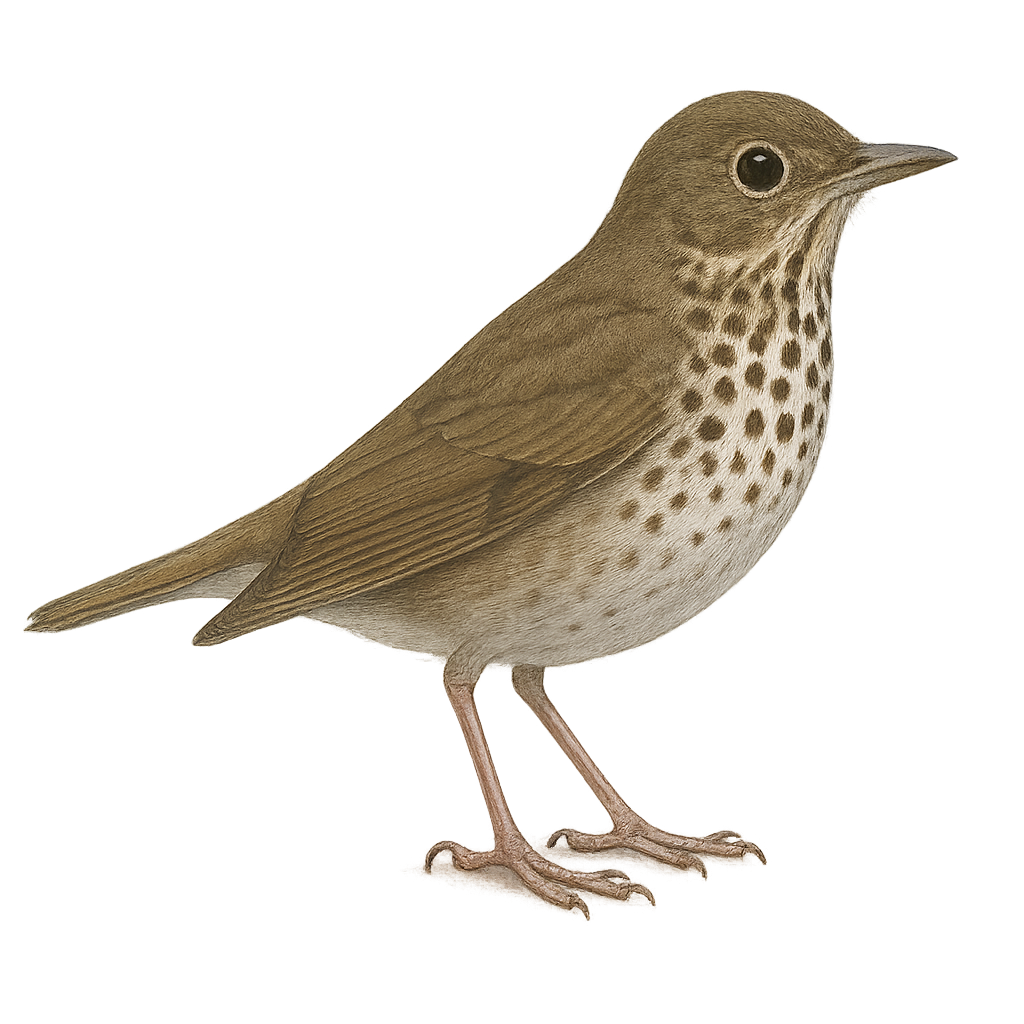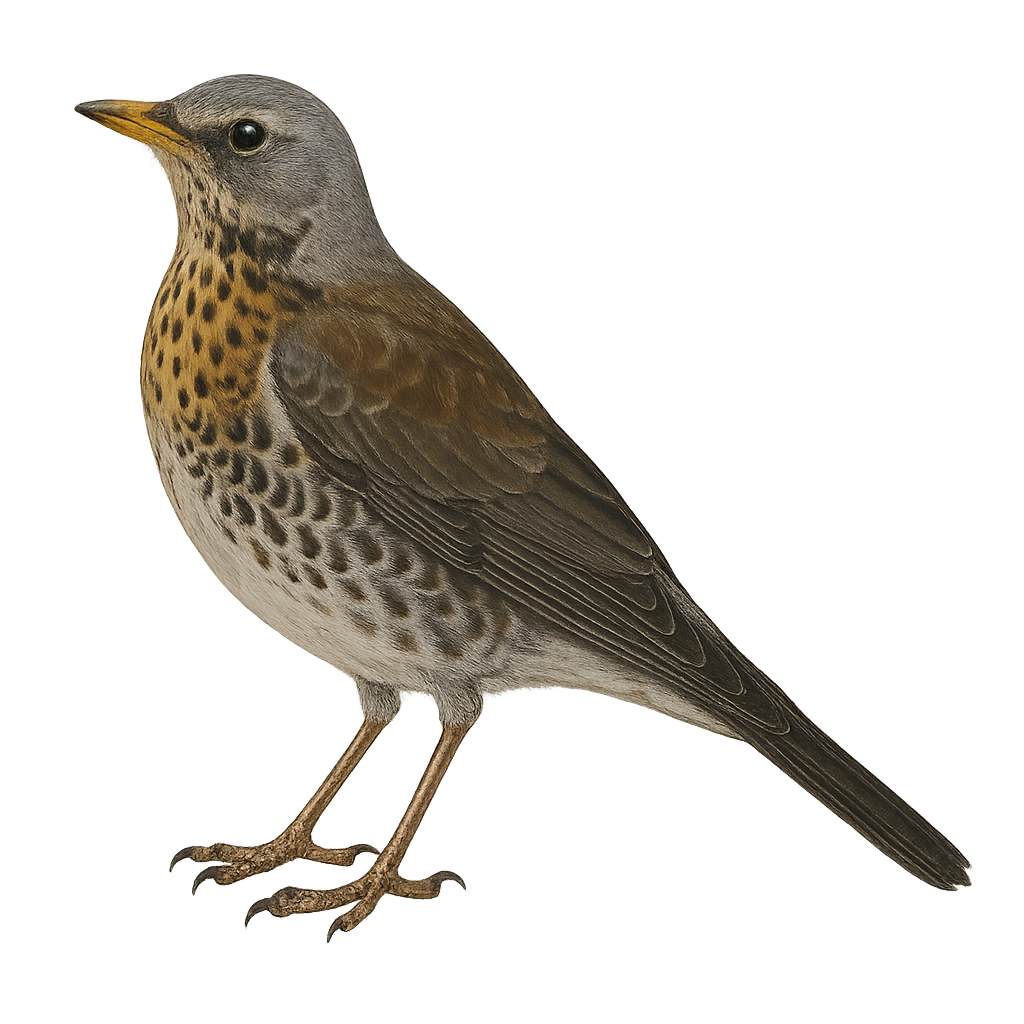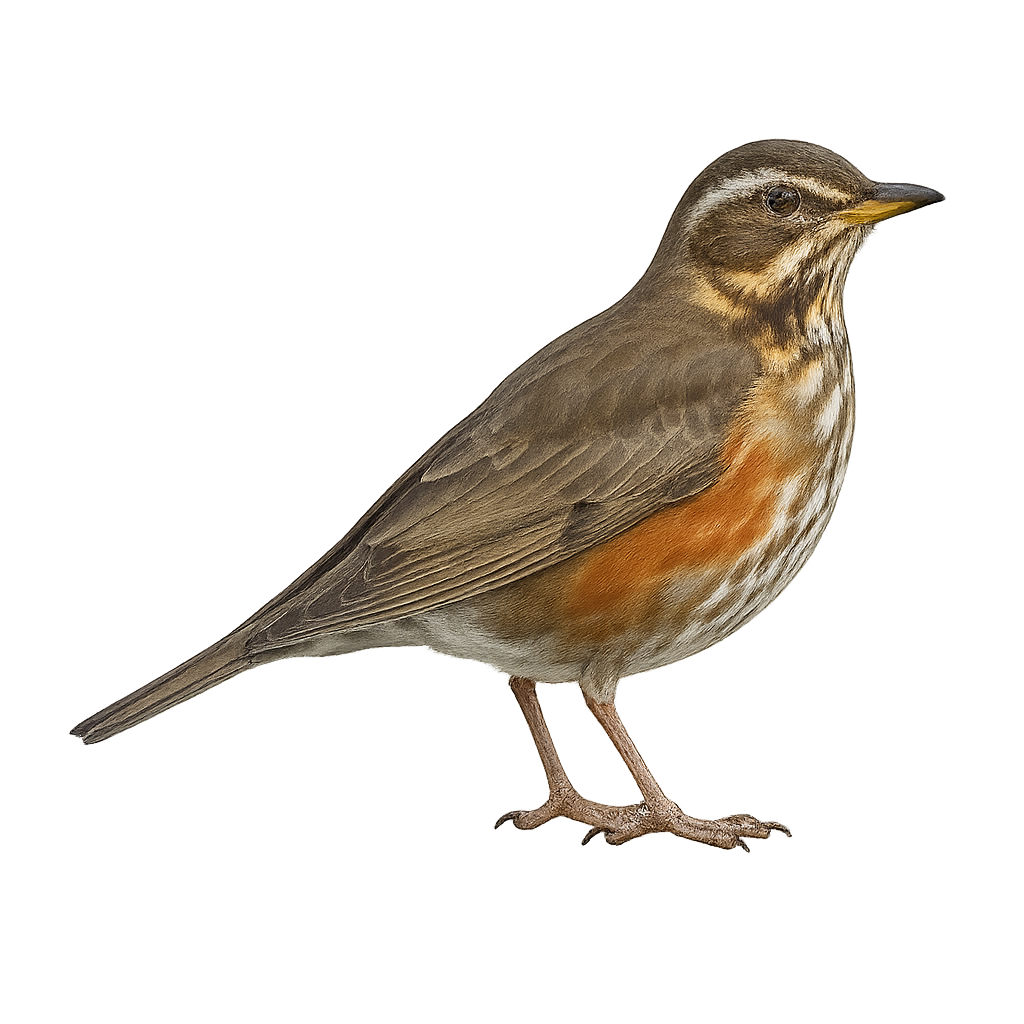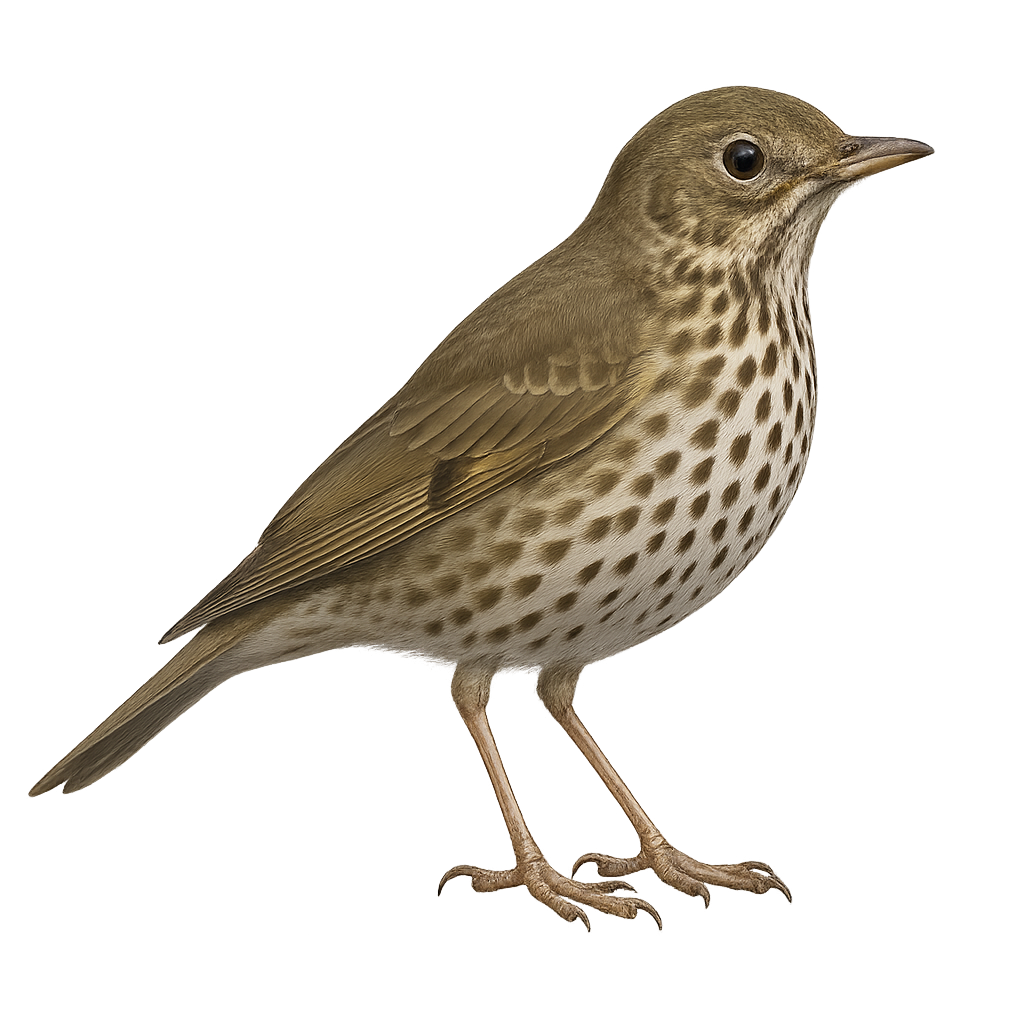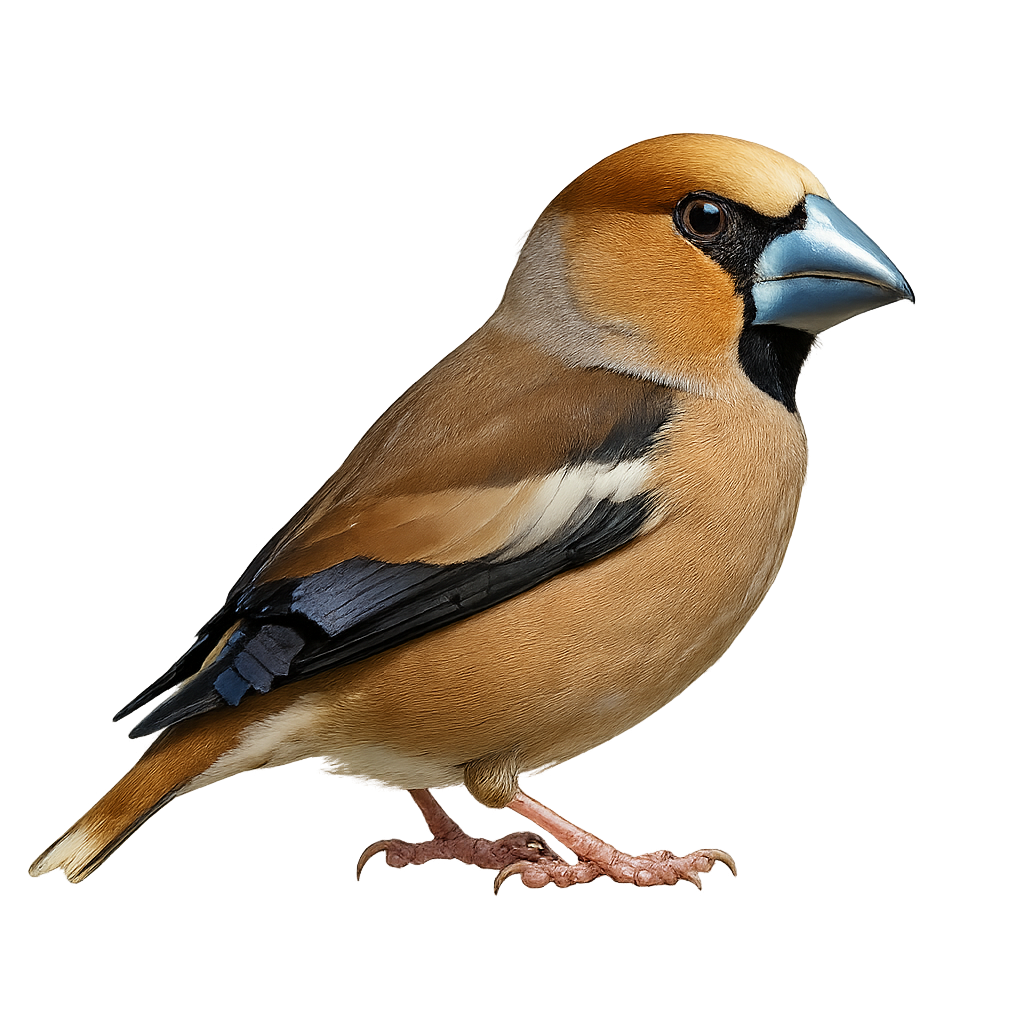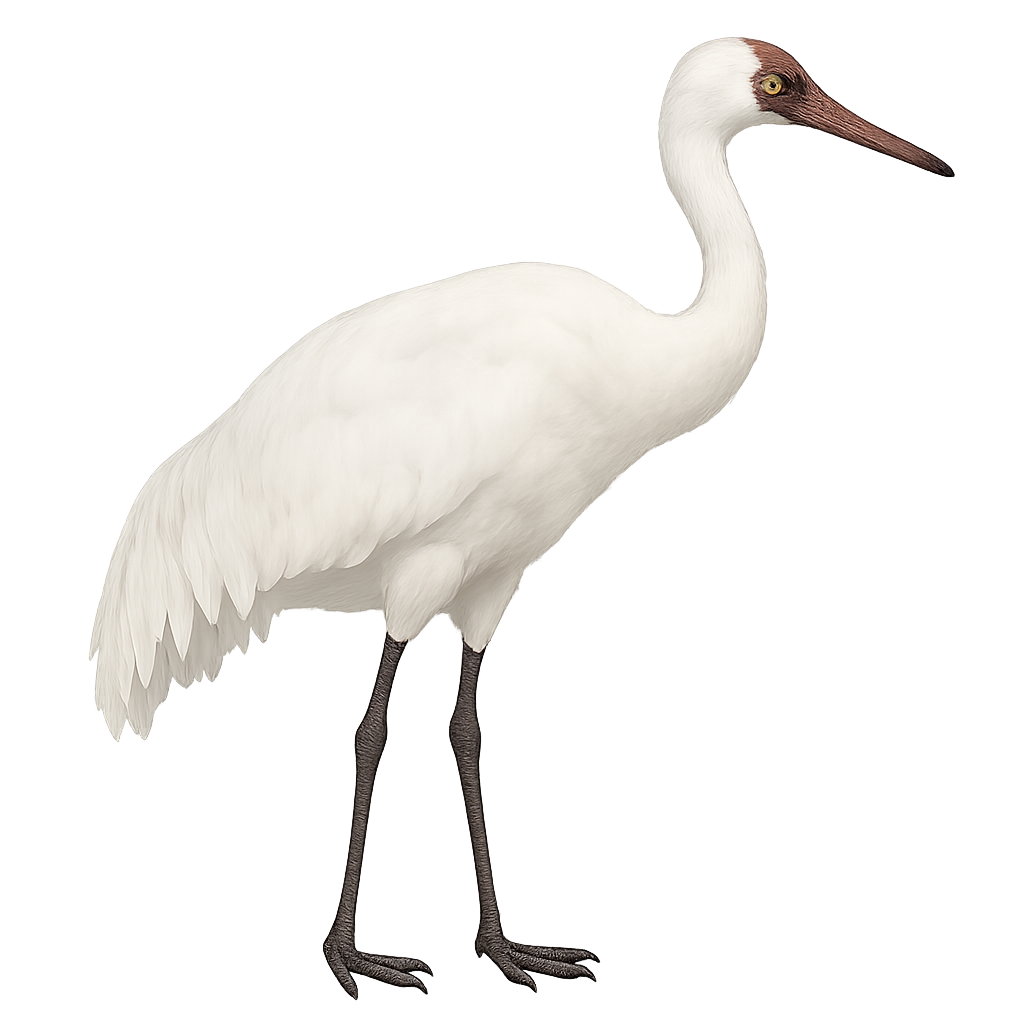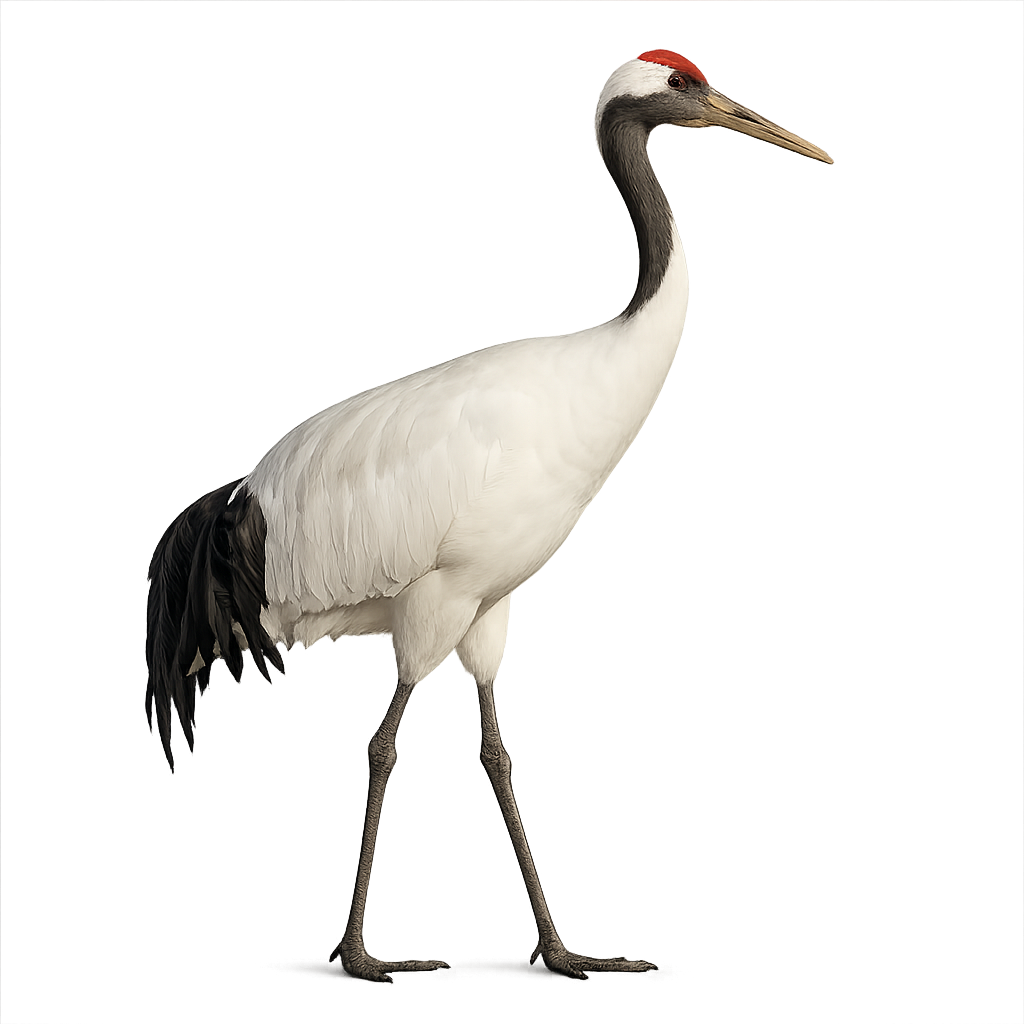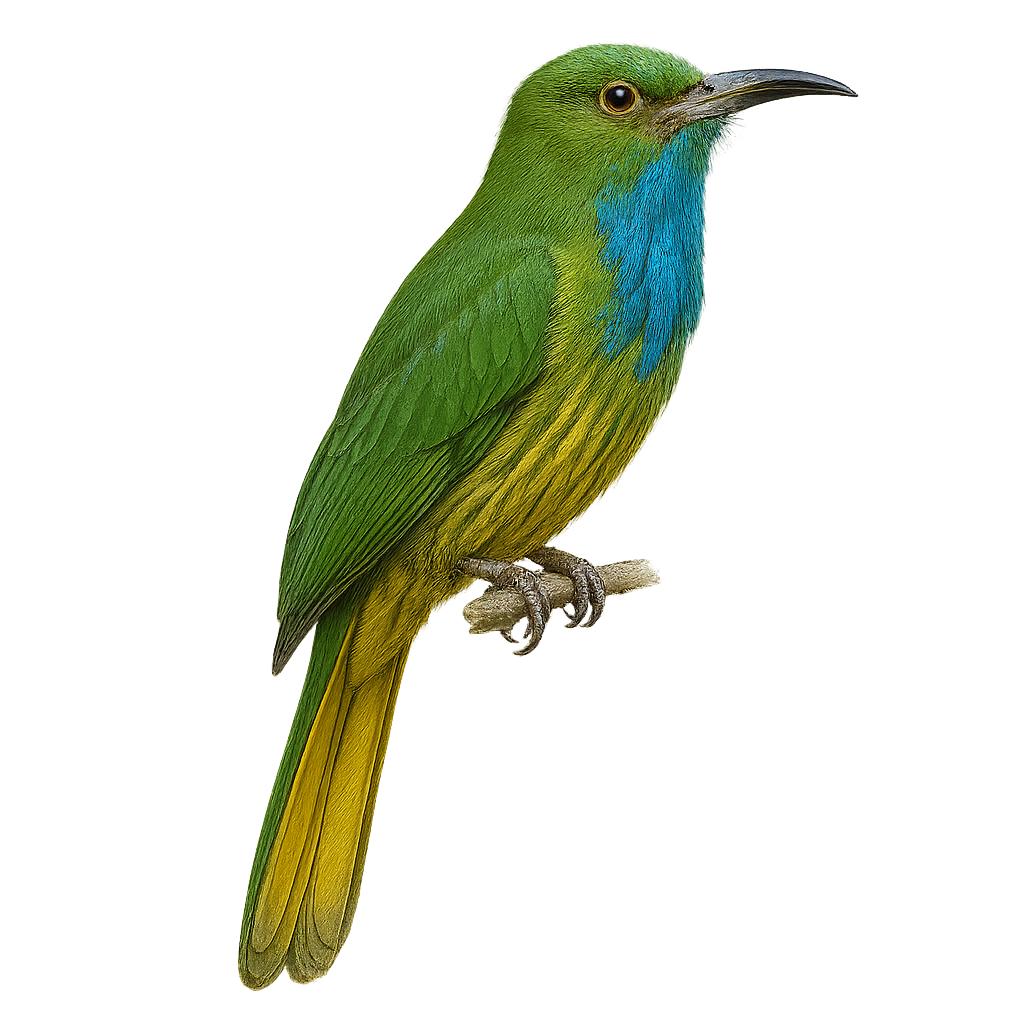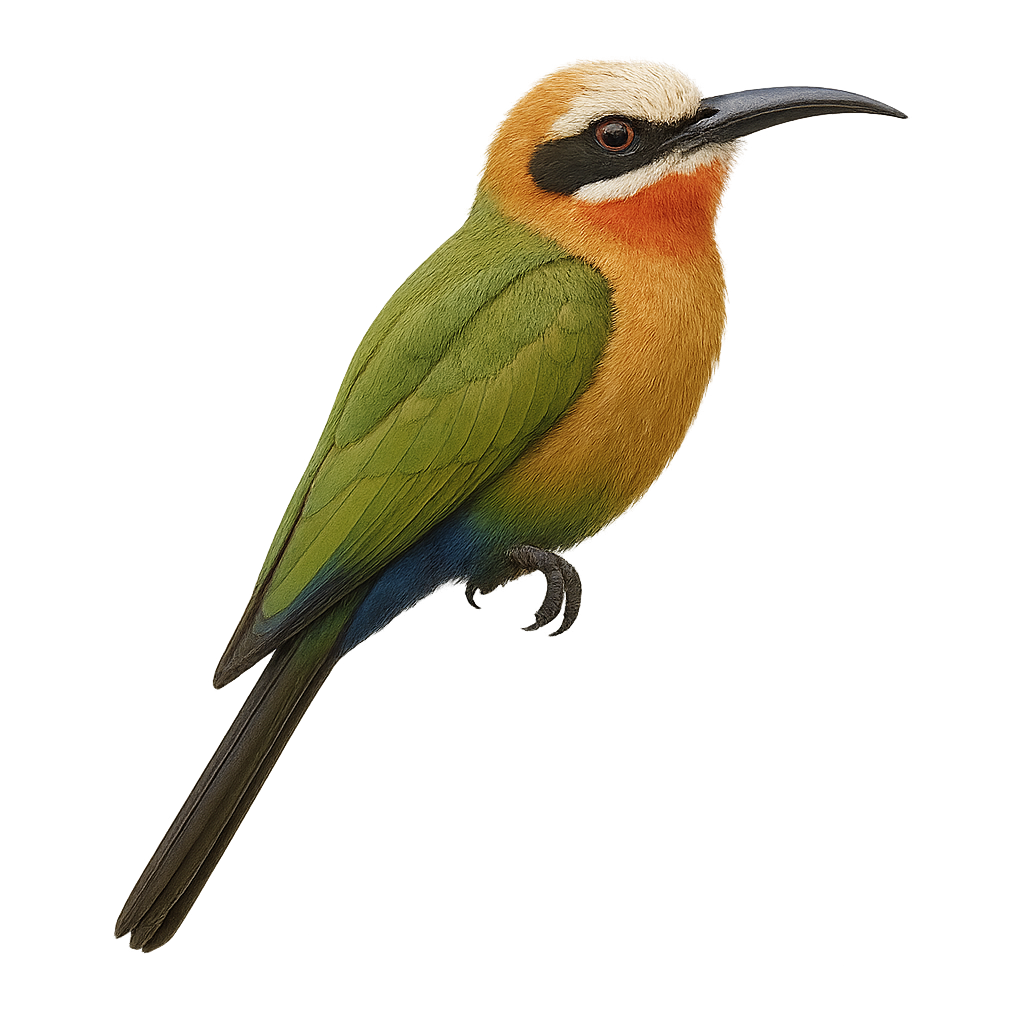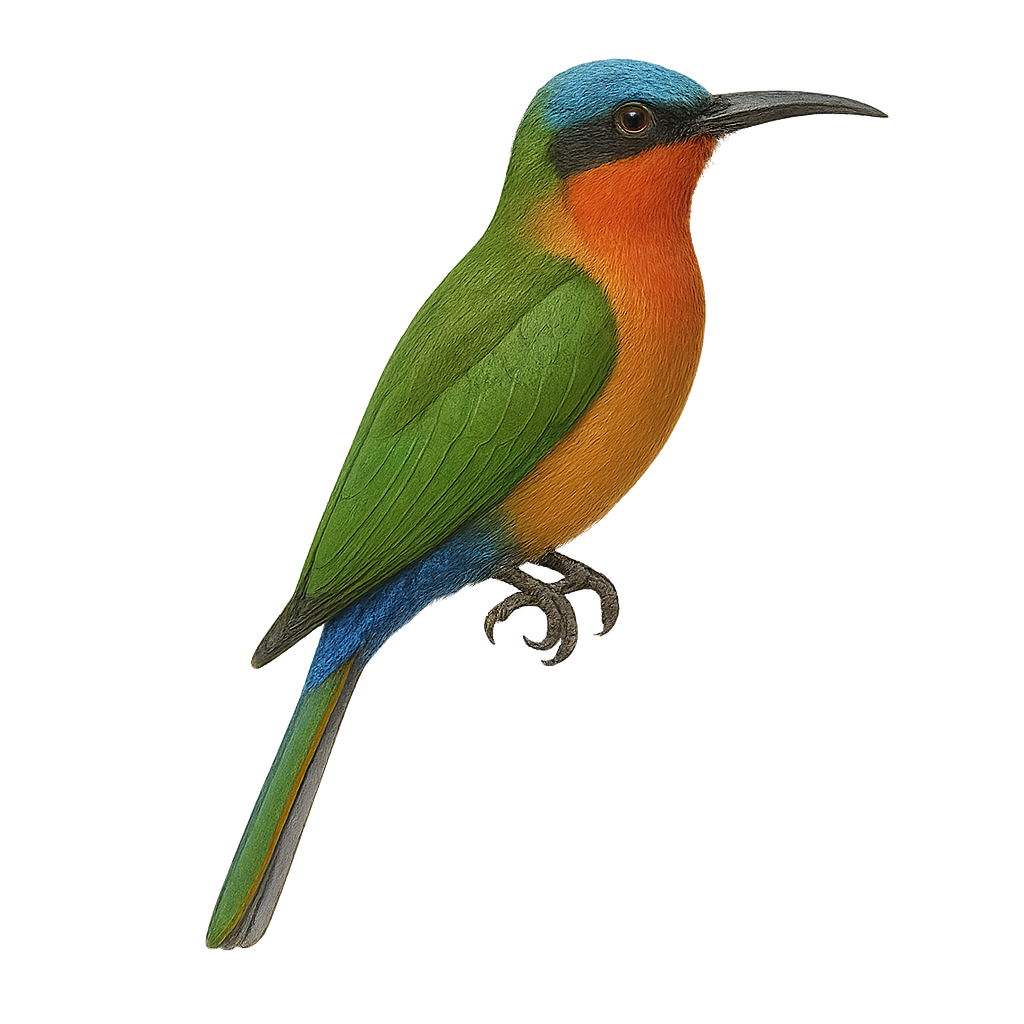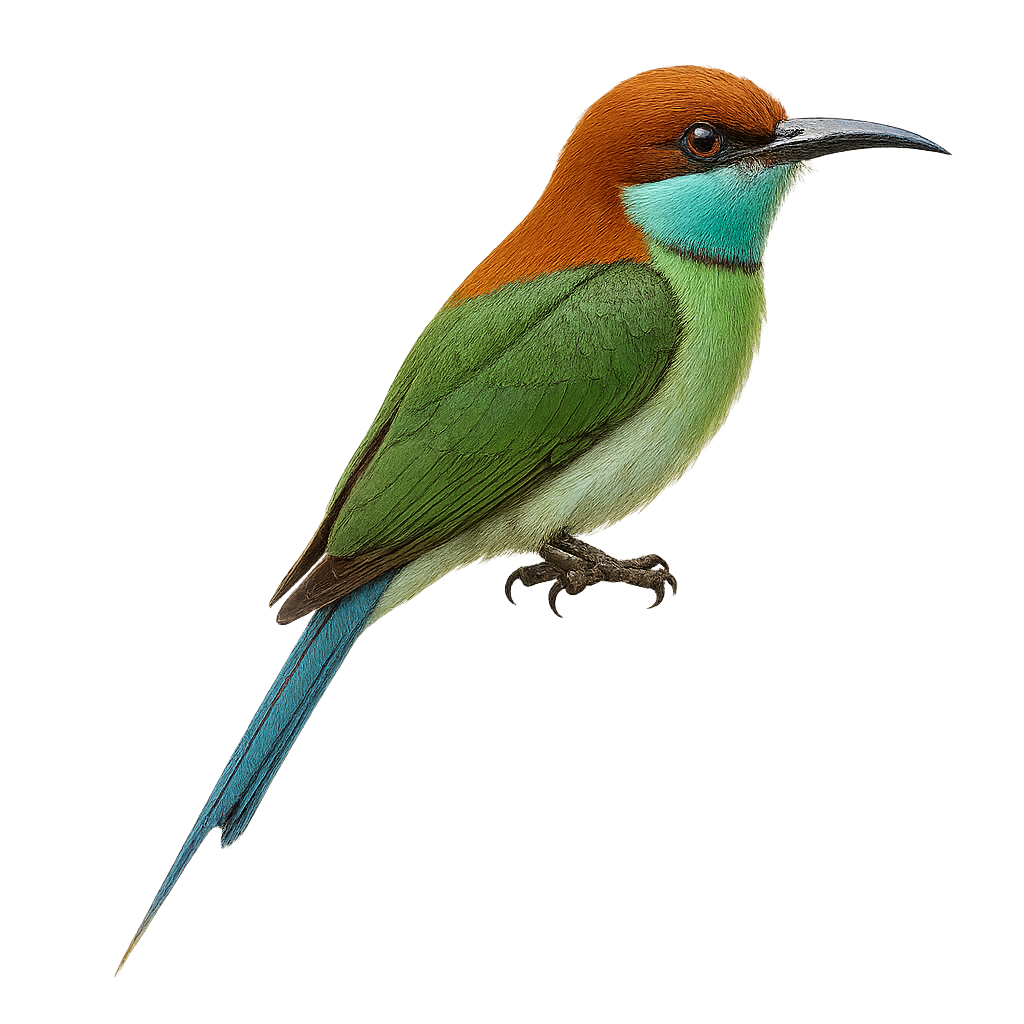The Spot-backed Antwren is a small bird from the Thamnophilidae family, primarily found in the humid tropical forests of South America, especially in Colombia and Venezuela. It is characterized by its grey plumage with white spots on its back, providing effective camouflage in its natural habitat. This bird is often seen in pairs or small groups, actively moving in search of insects and spiders. Although discreet, its distinctive song makes it easier to locate. The Spot-backed Antwren plays an important role in the ecosystem by controlling insect populations. Its conservation is crucial as deforestation threatens its natural habitat.
The Swainson's Thrush is a medium-sized migratory bird belonging to the Turdidae family. It is recognizable by its olive-brown plumage on the back and flanks, contrasting with a lighter belly. Its melodious and flute-like song is often heard in the temperate forests of North America, where it breeds during the summer. It prefers wooded habitats, especially coniferous and mixed forests. In the fall, it migrates to Central and South America to spend the winter. The Swainson's Thrush primarily feeds on insects and berries, which it finds on the ground or in bushes. It is generally discreet but can be observed during its migratory movements.
The Wood Thrush, or Hylocichla mustelina, is a medium-sized bird known for its reddish-brown back and white belly speckled with black. It is often found in deciduous forests of North America, feeding mainly on insects and fruits. Its melodious song is highly appreciated and adds to the woodland symphony. The Wood Thrush is migratory, spending winters in Central America. It is known for its ability to navigate long distances using geographical and magnetic cues. Although its habitat is threatened by deforestation, it remains relatively common.
The mistle thrush is a ground-dwelling bird found primarily in open woodlands, hedgerows, and cultivated areas across Europe and Asia. It is distinguished by its grey-brown plumage and dark spots on its belly. The mistle thrush is particularly known for its aggressive behavior when defending its territory, emitting loud songs and harsh calls. It primarily feeds on berries, fruits, and small insects.
The fieldfare, Turdus pilaris, is a medium-sized bird belonging to the Turdidae family. It is characterized by its grey head and rump, contrasting with a brown back and a white belly speckled with black. This bird is often seen in flocks, especially in winter, when it migrates south to escape the cold. The fieldfare primarily feeds on berries, fruits, and insects, which it finds in meadows, orchards, and open forests. It is known for its melodious song and loud alarm calls when threatened. During the breeding season, it builds its nest in trees, often in loose colonies, and vigorously defends its territory against predators.
The Redwing, or Turdus iliacus, is a small migratory bird belonging to the Turdidae family. It is characterized by its reddish-brown plumage on the back and reddish flanks, contrasting with its white belly. Its melodious song is often heard in the forests and parks of Europe and Asia, where it feeds mainly on berries and insects. In winter, it migrates south, sometimes reaching North Africa. The Redwing is a sociable bird, often seen in flocks, especially during migration. It typically nests in trees or shrubs, building a cup-shaped nest with twigs and mud.
The song thrush is a passerine bird found primarily in forests, hedgerows, and gardens across Europe, Asia, and North Africa. It is easily recognizable by its spotted plumage on the chest and belly, and its olive-brown back. This bird primarily feeds on earthworms, insects, and berries, and is particularly known for its powerful and melodious song, which varies depending on its location and the breeding season.
The Hermit Thrush, or Catharus guttatus, is a medium-sized bird, measuring about 17 cm in length. It is recognizable by its olive-brown back and dark spots on its chest. Its melodious song is often heard in North American forests, where it primarily nests. It prefers wooded and moist habitats, often near streams. A migratory bird, it winters in the southern United States and Central America. Its diet is varied, including insects, berries, and fruits. Although discreet, it is often observed moving on the ground in search of food.
The Hawfinch is a small passerine bird with a very powerful beak, designed to crack hard seeds and kernels. It measures about 22 cm in length and weighs between 50 and 70 g. Its plumage is mainly brown and gray, with white markings and a black patch on the head, while its wings are black with distinct white spots. The beak is wide, conical, and very robust, and it is the most remarkable feature of the bird. The Hawfinch primarily inhabits forests and wooded gardens in Europe and Western Asia, notably in France, Germany, Russia, and Turkey. It primarily feeds on seeds, particularly fruit pits and tree seeds. Its behavior is rather discreet and solitary, although it can be seen in small groups during the winter months. While the species is not endangered, habitat loss and deforestation may pose potential threats.
The Whooping Crane, or Grus americana, is a majestic and rare bird known for its large size and striking white plumage. It is characterized by its long legs and slender neck, as well as a distinctive red patch on the top of its head. This migratory bird travels long distances between its breeding grounds in northern Canada and its wintering areas in the southern United States. The Whooping Crane is a symbol of conservation, having been saved from extinction through intensive protection and captive breeding efforts. It primarily inhabits wetlands, where it feeds on small aquatic animals and vegetation.
The Common Crane is a large migratory bird, easily recognizable by its slender silhouette, long neck, and extended wings. It stands about 1.2 meters tall, with a wingspan of 2 to 2.5 meters, and weighs between 4 and 6 kg. Its plumage is mainly gray, with white markings on the head, neck, and wings. It has a red head and a small tuft of feathers on top, giving it a distinctive appearance. The Common Crane primarily inhabits wetlands, marshes, and lakes across Europe and Asia, with large populations in Scandinavia, Germany, Poland, and the Mediterranean Basin. It is a migratory bird that travels to southern Europe and Africa for the winter. It feeds mainly on plants, roots, seeds, and occasionally insects. The Common Crane is also known for its impressive group migrations, with thousands of individuals flying in a "V" formation. While the species is not endangered, it is vulnerable to the loss of its natural habitat and disruption of its breeding sites.
The Black Crowned Crane, Balearica pavonina, is a majestic and iconic bird of the wetlands in West and Central Africa. It is distinguished by its golden crown of stiff feathers and predominantly grey plumage. Its face features white and red cheeks, and it has a short, black beak. Standing about one meter tall and weighing between 3 and 4 kg, this gregarious bird is often seen in pairs or small groups, feeding on seeds, insects, and small vertebrates. The Black Crowned Crane is renowned for its spectacular courtship displays, performing complex dances with jumps and wing flaps.
The Sandhill Crane, or Grus canadensis, is a majestic and slender bird, recognizable by its ash-gray plumage and vivid red crown. It stands about 1 to 1.2 meters tall with a wingspan reaching up to 2 meters. This migratory bird is often seen in large flocks during its seasonal movements between breeding grounds in North America and wintering areas further south. The Sandhill Crane is omnivorous, feeding on aquatic plants, insects, and small vertebrates. It is known for its spectacular courtship dances, which include graceful leaps and wing flapping. Although its conservation status is currently "least concern," it faces threats such as habitat loss and climate change.
The Japanese Crane is a large migratory bird, recognized for its elegant silhouette and spectacular courtship dances. It stands about 140 cm tall, with a wingspan of 2.4 to 2.8 meters, and weighs between 6 and 10 kg. Its plumage is mainly white, with black feathers on its back and wings, and a distinct red head, which is often featherless. It also has black patches around its eyes. The Japanese Crane primarily inhabits marshes, rice fields, and wetlands in Japan, but it is also found in China and Russia. It mainly feeds on aquatic plants, seeds, small insects, and occasionally small fish. This species is famous for its ritual courtship dances, during which the partners engage in graceful jumps and movements. The Japanese Crane is an endangered species due to habitat loss, pollution, and poaching. Conservation efforts have been made to protect its breeding habitats and resting areas.
The Crowned Crane is a large crane species, easily recognizable by its majestic golden plume crown on its head. It stands about 1 meter tall, with a wingspan of 1.8 to 2.2 meters, and weighs between 3 and 5 kg. Its plumage is mainly light gray, with white feathers on its belly and wings, and a head adorned with a golden crest, giving it a royal appearance. This species is primarily found in East Africa, notably in Uganda, Kenya, and Tanzania, where it inhabits wetlands, marshes, and grasslands. The Crowned Crane primarily feeds on seeds, roots, insects, and occasionally small vertebrates. It is a social bird, living in groups and often performing spectacular courtship displays, during which it engages in dances and calls. Although the Crowned Crane is considered "vulnerable," conservation efforts have been implemented to protect the species, as it faces threats from habitat loss, hunting, and human disturbance.
The Blue-bearded Bee-eater, or Nyctyornis athertoni, is a fascinating bird known for its striking plumage and distinctive blue beard. It primarily inhabits the tropical and subtropical forests of Southeast Asia, particularly in India, Bangladesh, and Thailand. This bird measures about 30 to 35 cm in length and primarily feeds on insects, especially bees and wasps, which it catches in flight with its robust and slightly curved beak. The Blue-bearded Bee-eater is a diurnal bird, often observed alone or in pairs, and is known for its agile and swift flight. Although relatively tolerant of human presence, it prefers dense wooded areas where it can hide and feed in peace.
The Blue-breasted Bee-eater, or Merops variegatus, is a colorful and fascinating bird belonging to the Meropidae family. It boasts a vibrant plumage with shades of green, blue, and brown, and a bright blue breast that gives it a distinctive appearance. This bee-eater is often observed in savannas, open forests, and wooded areas of sub-Saharan Africa. It primarily feeds on flying insects, especially bees and wasps, which it catches in flight with remarkable agility. The Blue-breasted Bee-eater is a sociable bird, often seen in small groups, and is known for its spectacular courtship displays. Although its conservation status is currently stable, deforestation and habitat loss could pose future threats.
The Red-bearded Bee-eater, or Nyctyornis amictus, is a striking bird native to the tropical forests of Southeast Asia. Easily identifiable by its vivid red throat and bright green plumage, it measures about 25 to 30 cm in length. This bird is known for its sturdy, slightly curved beak, perfect for catching flying insects, especially bees and wasps. It prefers dense wooded habitats, where it can perch discreetly while waiting for prey. The Red-bearded Bee-eater is a solitary bird, often seen alone or in pairs. Its breeding season varies by region, but it typically nests in tree cavities or sandy banks. Although its conservation status is currently "Least Concern," deforestation poses a potential threat to its natural habitat.
The White-fronted Bee-eater, Merops bullockoides, is a colorful and fascinating bird, recognizable by its vibrant plumage and social behavior. It features a green head with a distinctive white forehead, a red throat, and a yellow belly. Its wings are bright green, while its tail is bluish with elongated central feathers. This bee-eater is often seen in groups, nesting in colonies along sandy riverbanks. It primarily feeds on flying insects, especially bees and wasps, which it catches in flight with agile aerial maneuvers. The White-fronted Bee-eater is a diurnal bird, active mainly during the day, and is known for its melodious calls and graceful flight.
The White-throated Bee-eater is a colorful and elegant bird belonging to the Meropidae family. It is distinguished by its bright plumage, with a white throat contrasting with shades of green, blue, and black. This migratory bird is mainly observed in sub-Saharan Africa, where it frequents savannas, open forests, and wooded areas. It primarily feeds on flying insects, especially bees and wasps, which it catches in mid-air thanks to its remarkable aerial skills. The White-throated Bee-eater is a sociable bird, often seen in groups, and it nests in burrows dug into sandy banks. Its breeding season generally coincides with the rainy season when food availability is optimal.
The Blue-throated Bee-eater, Merops viridis, is a colorful and fascinating bird known for its vibrant plumage and captivating social behaviors. It sports bright green feathers, with a blue throat and wings in shades of brown and blue. This bird is often observed in Southeast Asia, particularly in tropical forests and open wooded areas. It primarily feeds on flying insects, especially bees and wasps, which it catches in flight with remarkable agility. The Blue-throated Bee-eater is a sociable bird, often seen in groups, and is known for its spectacular courtship displays. Its breeding season varies by region but is generally active during the warmer months.
The Bullock's Bee-eater, or Merops bullocki, is a colorful and fascinating bird belonging to the Meropidae family. This bee-eater is distinguished by its vibrant plumage, combining shades of green, blue, and yellow, with an often orange throat. It is mainly observed in wooded regions and open savannas of sub-Saharan Africa. This bird is known for its specialized feeding habits, primarily consuming flying insects, particularly bees and wasps, which it captures in flight with its aerial hunting techniques. The Bullock's Bee-eater is a social bird, often seen in small groups, and is renowned for its spectacular courtship displays. Although not considered threatened, deforestation and habitat loss could affect its populations in the long term.
The Rufous-crowned Bee-eater, or Merops americanus, is a colorful and fascinating bird known for its vibrant plumage and social behavior. It features bright feathers in shades of green, blue, and yellow, with a long, curved beak ideal for catching insects in flight. This bird is often seen in groups, nesting in colonies on sandy banks. It primarily feeds on bees and wasps, which it skillfully captures. The Rufous-crowned Bee-eater is a migratory bird, traveling long distances between its breeding grounds and wintering areas. It is appreciated for its beauty and its role in controlling insect populations.
The Black-headed Bee-eater, or Merops mentalis, is a small and discreet bee-eater found in West and Central Africa, typically in open woodlands and forest edges. It is identified by its bright green plumage, turquoise-blue belly, and distinct white throat bordered by black “moustache” markings. Its slender black bill is slightly curved downward. This species is usually seen in pairs or small groups, perched openly while hunting flying insects, especially bees and dragonflies. Although little known outside its range, the Black-headed Bee-eater remains relatively common in undisturbed habitats.
The Swallow-tailed Bee-eater is a colorful and fascinating bird, recognizable by its long forked tail and vibrant plumage. It displays bright shades of green, blue, and yellow, making it easily identifiable in its natural habitat. This bird is often seen in small groups, primarily feeding on flying insects that it catches mid-air. It has a particular fondness for bees and wasps, which it skillfully handles. The Swallow-tailed Bee-eater is a partial migrant, inhabiting savannas, open forests, and semi-arid regions of sub-Saharan Africa. Its presence is an indicator of ecosystem health, as it relies on the availability of insects for sustenance.
The Blue-tailed Bee-eater, Merops philippinus, is a colorful and graceful bird belonging to the Meropidae family. This bee-eater is distinguished by its vibrant plumage, predominantly green with a bright yellow throat and turquoise blue tail. It is often seen in Southeast Asia, particularly in open areas near water, where it hunts insects in flight. Known for its acrobatic flights and melodious song, it nests in burrows dug into sandy banks. Although sociable, it remains wary of humans. Its population is stable, but it is sensitive to environmental changes.
The Arabian Green Bee-eater, Merops cyanophrys, is a medium-sized, colorful bird, measuring about 28 cm in length. It is easily recognizable by its bright green plumage, pale blue cheeks, and vivid yellow throat. This elegant bird is often observed in flight, catching insects mid-air with its agile aerial maneuvers. It frequents open areas, savannas, and semi-arid regions, often near water. A migratory species, it breeds in southern Europe and western Asia, then migrates to sub-Saharan Africa for the winter. The Arabian Green Bee-eater is a sociable bird, often seen in groups, and nests in burrows dug into sandy banks.
The Blue-headed Bee-eater, or Merops muelleri, is a captivating bird belonging to the Meropidae family. This bee-eater is distinguished by its bright blue head, green back, and rufous chest, creating a striking contrast. It is primarily found in the dense tropical forests of Central Africa, notably in Cameroon, the Central African Republic, and the Democratic Republic of the Congo. This bee-eater is a specialized insectivore, feeding mainly on bees and wasps, which it catches in flight with agile aerial maneuvers. The Blue-headed Bee-eater is a social bird, often seen in small groups. Its breeding period is poorly documented, but it is known to nest in burrows dug into sandy banks. Although its conservation status is currently assessed as "least concern," deforestation poses a potential threat to its natural habitat.
The Black-headed Bee-eater, or Merops breweri, is a colorful and fascinating bird primarily found in the tropical forests of Central Africa. It is distinguished by its black head contrasting with its bright green body and white throat. This bee-eater is a specialized insectivore, feeding mainly on bees and wasps, which it catches in flight thanks to its agility and speed. It lives in small family groups and is known for its complex social behaviors, including food sharing and cooperative territory defense. Although its habitat is threatened by deforestation, it is currently classified as "least concern" by the IUCN.
The Rainbow Bee-eater, Merops ornatus, is a colorful and fascinating bird primarily found in Australia and New Guinea. Its slender silhouette and vibrant colors, ranging from emerald green to azure blue, make it a remarkable visual spectacle. This bird measures about 23 to 28 cm in length, with a long, tapered tail. It is known for its aerial prowess, catching insects in flight, particularly bees and wasps. The Rainbow Bee-eater is often seen in groups, nesting in burrows dug into sandy banks. Its melodious song and aerial courtship displays add to its charm. Although widely distributed, it is sensitive to disturbances in its natural habitat.



